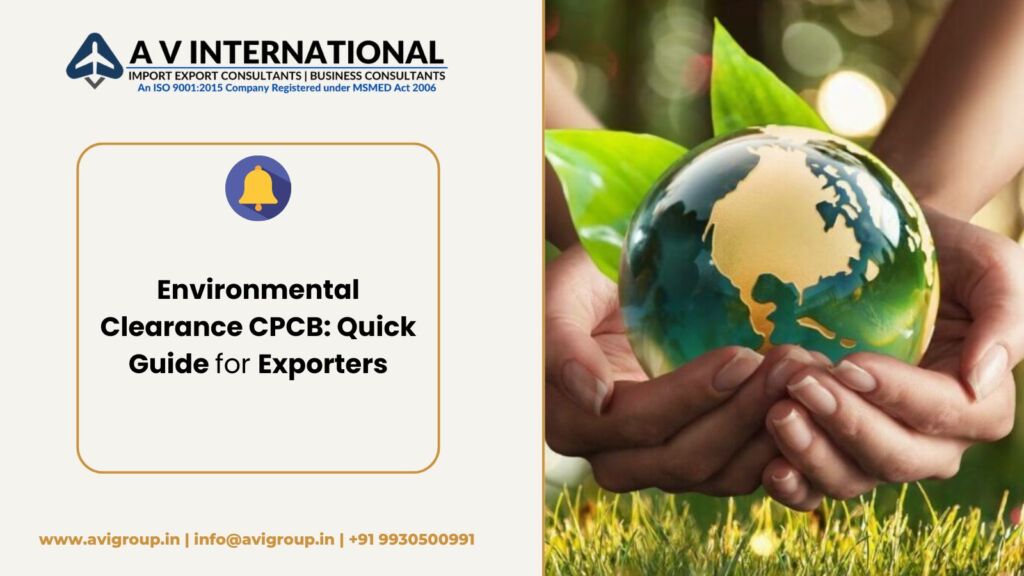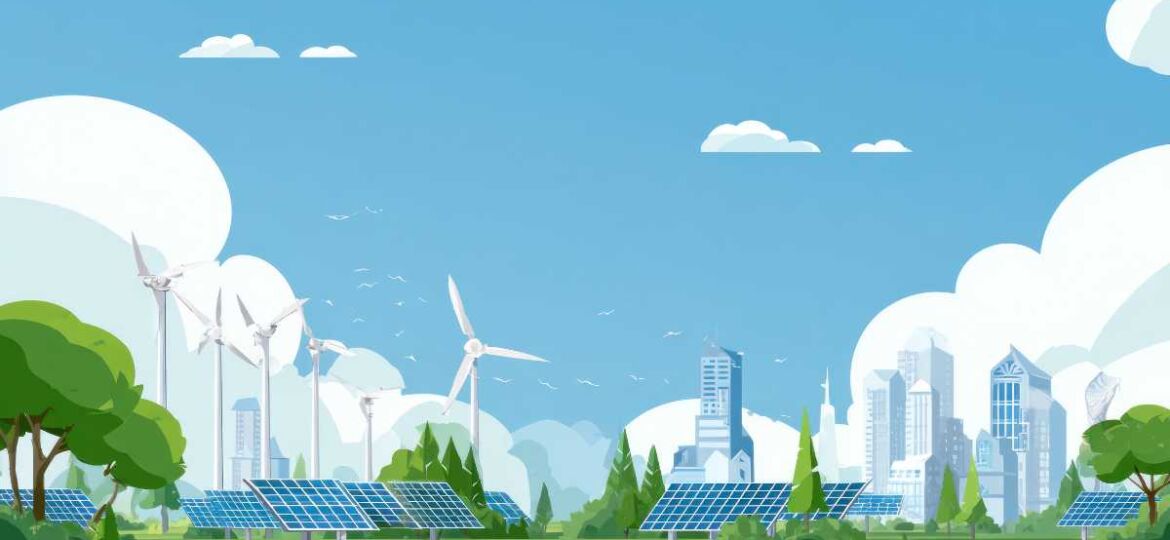Environmental Clearance CPCB: Quick Guide for Exporters

If you’re an Indian exporter or manufacturer working under schemes like the Advanced Authorization License, EPCG License, or registering for EPR (covering E-Waste, Plastic, or Battery waste), securing environmental clearance from CPCB and MoEFCC is a must. This clearance isn’t just a regulatory checkbox—it’s a sign that your business operates responsibly and is set up for long-term success.
Why is Environmental Clearance Important?
If your manufacturing unit produces hazardous materials, exports products under DGFT licenses, or manages waste through EPR registration, environmental clearance is crucial. For those registered under Extended Producer Responsibility (EPR), having this clearance serves as proof of compliance and adds credibility to your business, assuring partners and regulators alike that you operate within the law.
Key Documents You’ll Need
For Advanced Authorization and EPCG licenses, you’ll typically require:
– A Project Concept Note that outlines your manufacturing and export plans.
– Site Location Maps and Surveys showing your factory and infrastructure setup.
– Your IEC (Import Export Code) to prove you’re a registered exporter.
– RCMC (Registration-Cum-Membership Certificate) as proof of membership with the export promotion councils.
– MSME or Udyam registration or manufacturing proof, along with your GST certificate confirming your business status.
– An Environmental Impact Assessment (EIA) report, especially for resource-intensive projects, examines potential effects on air, water, soil, and biodiversity.
– Permissions from CPCB or state pollution control boards, including NOCs for operating or setting up your factory.
– Chartered engineer or CA certificates confirming your technical and financial ability to meet compliance and production needs.
– If no processing happens onsite, a Letter of Intent along with your factory address and a product/process flow chart is necessary.
For EPR Registrations related to E-Waste, Plastic, or Battery Waste, you’ll also need:
– Your company profile and authorized signatory details.
– Details about your products, expected waste generation, and recycling targets.
– A Waste Management Plan showing how you will collect, recycle, and dispose of waste responsibly under CPCB guidelines.
– Annual Compliance Reports documenting recycling progress.
– Necessary registration documents like PAN, GST, manufacturing licenses, and prior environmental clearances if handling hazardous waste.
Step-by-Step Guide to Getting Environmental Clearance
– Project Screening & Categorization
Begin by submitting your project details through the PARIVESH portal where authorities classify your project for assessment.
– Document Compilation & Submission
Gather all the required documents and submit your application via the DGFT portal for export licenses or CPCB’s EPR portal for waste management registrations.
– Scoping & Terms of Reference
State and central authorities will define what specific clearances you need, including required mitigation measures. Stakeholder consultations may also take place.
– Detailed EIA Study
You’ll conduct an in-depth study to assess environmental impacts, covering air, water, soil, and biodiversity.
– Environmental Management Plan (EMP)
This plan will outline how you’ll manage pollution sources, handle waste, and respond to any environmental emergencies, including budget and timelines.
– CPCB Review & Clearance
The authorities will review your entire submission, possibly request clarifications, and once satisfied, issue the environmental clearance certificate.
– Annual and Periodic Reporting
Maintain records of compliance and regularly submit environmental reports to the CPCB to stay in good standing.
Tips for a Smooth Process
· Start your environmental clearance application well before making large investments to avoid delays.
· Engage reputable consultants to assist with your EIA and all technical documentation.
· Coordinate your EPR registration and DGFT/EPCG licensing processes with environmental clearances to streamline approvals.
Final Thoughts
If you’re applying for an Advanced Authorization License, EPCG license, or EPR Registration, environmental clearance from CPCB isn’t just a formality—it’s fundamental to setting up your operation legally and qualifying for export incentives. Keeping your documentation thorough, understanding the environmental impact assessment process, and maintaining timely reporting will help your business thrive in 2025 and beyond.
DGFT
Legal
Company Secretarial
DGFT Notifications
Others
Recent Posts
- Top Export Compliance Mistakes: DGFT Advance Authorization, EPCG & CPCB (2025 Guide)
- Environmental Clearance CPCB Quick Guide for Exporters
- DGFT e-BRC Rule 2025: Key Update for Advance Authorization & EPCG Holders
- Key DGFT Changes 2025: Advance Licensing, EPCG & EPR Overview
- DGFT 2025 Updates: Key Changes for Advance Authorization License & EPCG Authorization Licence Holders
- DGFT Notifies 3 New SIONs: A-3690, A-3691 & A-3692
- DGFT allocates 5841 MT for Sugar Export
- DGFT Eases Export Rules for Pharma Grade Sugar – Key Changes in ANF-2N Form
FeATURED ARTICLES
Top Export Compliance Mistakes: DGFT Advance Authorization, EPCG & CPCB (2025 Guide) Exporting in India can feel like a legal…
Environmental Clearance CPCB: Quick Guide for Exporters If you’re an Indian exporter or manufacturer working under schemes like the Advanced…
DGFT e-BRC Rule 2025: Key Update for Advance Authorization & EPCG Holders The Directorate General of Foreign Trade (DGFT) has…
Key DGFT Changes 2025: Advance Licensing, EPCG & EPR Overview DGFT Updates 2025: What Exporters and Importers Should Know About…






